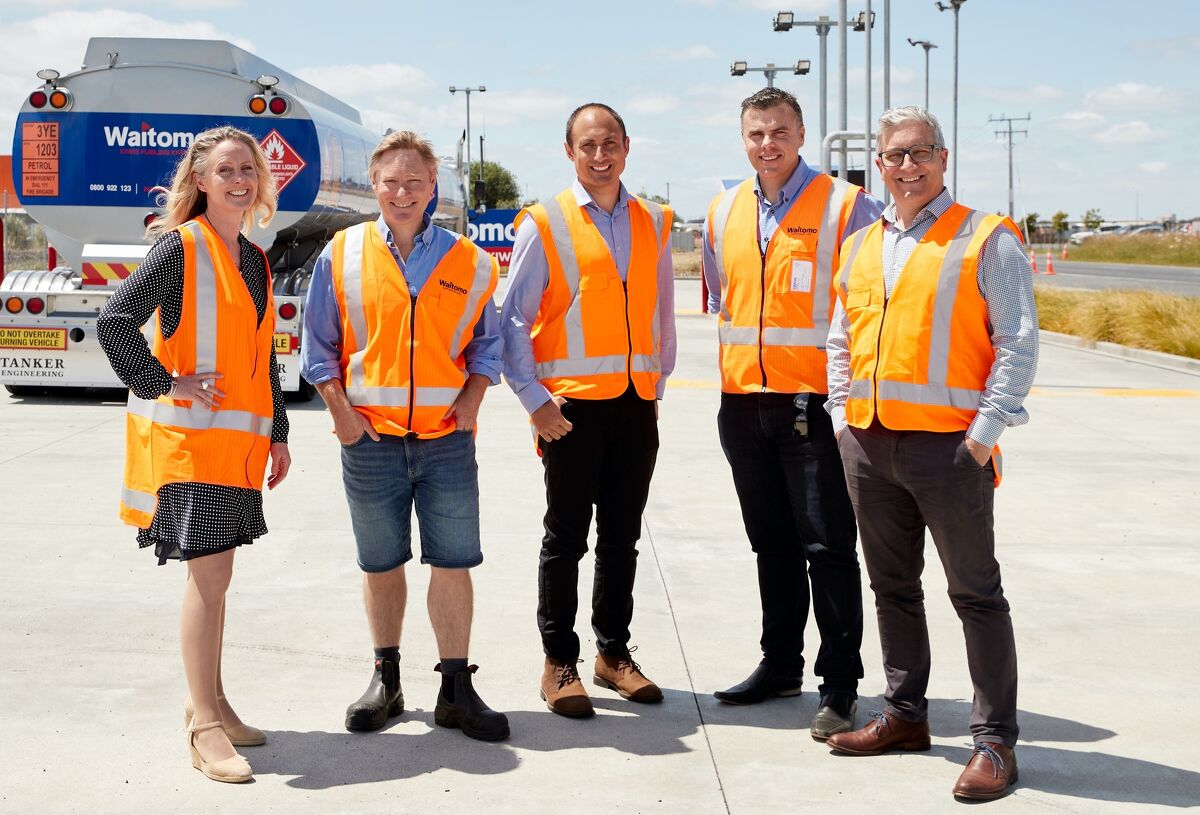Waitomo hits gas on cleaner fuel options
Date: 11 Aug 2022
Truck operators, long used to filling up with diesel with little choice of supplier, will be spoiled for fuel options in the next 10 years as big change sweeps the sector, says a company investing millions in the country's first hydrogen fuel network.
There will be a "potpourri" of energy sources available from mineral diesel for people still using old machinery, to electric power and bio-diesel, to hydrogen, while fuel sources will be decentralised from the traditional supply chains and the transport fleet will be less reliant on one energy source, Waitomo Group managing director Jimmy Ormsby told a recent freight industry conference.
While his 75-year-old New Zealand company has just a 4 per cent share of the national fuel supply market, it is setting a brisk pace in decarbonisation of the supply chain, with resource consents to build three hydrogen fuel stops - at Palmerston North, Te Rapa and Wiri, Auckland - and its "super site" at the emerging giant Ruakura freight and distribution hub due for completion in December.
Waitomo's hydrogen focus follows it teaming up in 2017 with zero carbon green hydrogen producer and infrastructure developer Hiringa Energy, whose chief executive Andrew Clennett spoke alongside Ormsby at the Auckland freight summit.
Ormsby said the fuel supply industry had been stable for many years, but significant change was ahead in the next decade, in which Waitomo was making a heavy investment.
The company has 75 commercial and retail fuel stops and was continuing to build its network, while adding space to host Hiringa hydrogen technology and providing alternate fuels, he said.
"When we build a new fuel stop without any hydrogen on it is costing up to $2.5 million, adding hydrogen to that adds up to $10 million, so we're talking about big money and it taking time," Ormsby said.
"There will be less reliance on one energy source - a bit of everything, not one-size-fits-all."
Hiringa's Clennett reinforced the "tool kit" future of transport supply chain energy sources.
Hiringa is working with partners to mature large scale green hydrogen production across New Zealand to complement its existing domestic projects for transport and industrial feedstock, and for export of green hydrogen to Asia.
Also on its project books is a Kapuni green hydrogen and ammonia scheme, harnessing wind resources in Taranaki, while projects under development include hydrogen production for the marine and aviation sectors, producing sustainable aviation fuels and synthetic liquid fuels and hydrogen for remote power generation.
Clennett said the first four fuelling sites in its planned national hydrogen production and refuelling network - at Hamilton, Tauranga, Auckland and Palmerston North - would be operational next year and would provide 95 per cent coverage of the North Island's main freight routes.
A further 20 stations across the North and South Islands were planned to be operational by 2026.
Hiringa's website says the network will also provide an affordable and reliable network for aviation, shipping and the marine sector, construction and off-road equipment, materials handling and stationary heat and power needs.
Hiringa said hydrogen fuel cells vehicles were one of the only viable zero-emission solutions available for heavy fleet operators today, and can have a material impact on emissions.
Clennett told freight industry leaders it bugged him that in consultations with the sector on decarbonisation, a lot of the transport ministry's work had focused on "the average truck".
"There is no average truck. But it appears the average truck does 27,000km a year and carries a 19.5 tonne payload. I challenge everyone in the room to find that truck."
The first thing to understand was the three lives of a truck, he said. The first life was "the big, shiny and pricey" truck that does up to 300,000km a year. At the other end there was the (old) scrap truck which went out to pick up scrap once a month. But this truck still sat in some government data set. Care was needed in analysis, Clennett said.
"The average truck is a drop in the ocean. Only 20 per cent of heavy transport emissions in road transport are by the 'average' truck - 80 per cent are by new and second life (older) trucks.
"Hydrogen suits the highest impact segments of the fleet, like the Toll and Mainfreights (trucks) doing over 1000km a day. The emissions out of converting diesel (there) is enormous. That's where we've gone to."
Hydrogen technology options for heavy transport moved from the "cheap and cheerful" hydrogen/diesel injection retrofit to the 100 per cent hydrogen combustion engine and through to the hydrogen fuel cell.
All have their uses and benefits - it's about understanding how you might apply them. You pay a penalty to get to hydrogen (fuel cell) from electricity but (the cost) is outweighed by the benefits. The total cost varies by the technology and the distances travelled - the further you drive the more efficient your vehicle, the stronger the business case."
Written by Andrea Fox, NZ Herald Writer
Back
